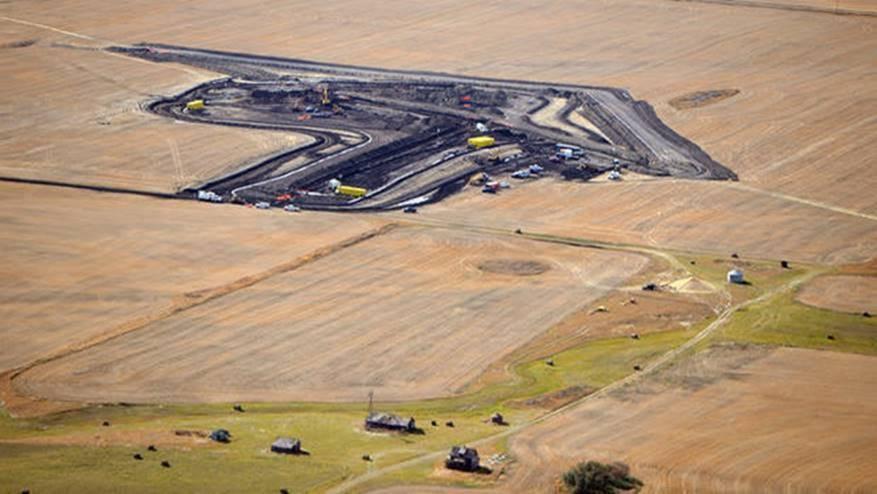The photos below were taken soon after the 2013 underground rupture of a Tesoro pipeline near Tioga, North Dakota. Farmer Steve Jensen, who had been paid by the pipeline company in exchange for permission to bury the pipe across his farmland, discovered the massive oil contamination of his wheat field while harvesting his crops on Sept 29, 2013. Jensen had to notify the company of its pipeline failure, because Tesoro’s state-of-the-art monitoring technology failed to detect the spill.
Tesoro initially grossly underestimated the significance of the spill (as is typical of all oil companies), claiming the volume of the spill, was 750 barrels. It was soon forced to publish a new figure of 20,600 barrels (which was likely also an under-estimate).
20,600 barrels is equivalent to 865,200 gallons, making the Tesoro pipeline oil spill the largest of the many spills that have plagued North Dakota since the Bakken Formation’s massive oil reserves were opened up to oil exploitation over the last two decades. The Bakken Formation, incidentally, was named after Henry Bakken a Tioga, North Dakota-area farmer where the massive oil deposit was originally discovered in 1951.
Two views of what a typical oil pipeline “spill” on dry land looks like after crews begin digging up part of the most superficial layer of the oil-saturated, totally irremediable, contaminated wheat field soil that was in the vicinity of the pipeline rupture.
Tesoro re-named itself Andeavor a few months ago after it completed the acquisition of an oil refinery company. (Andeavor is currently valued at $105 per share on the New York Stock Exchange). The company is based in San Antonio, Texas,
The Political Economy Research Institute identified Tesoro as the 24th-largest corporate producer of air pollution in the US, releasing roughly 3,740,000 lbs of toxic chemicals annually. Major pollutants emitted annually by the corporation include more than 400,000 lbs of sulfuric acid. The EPA also named Tesoro a responsible party for four Superfund toxic waste sites.
To be continued.


